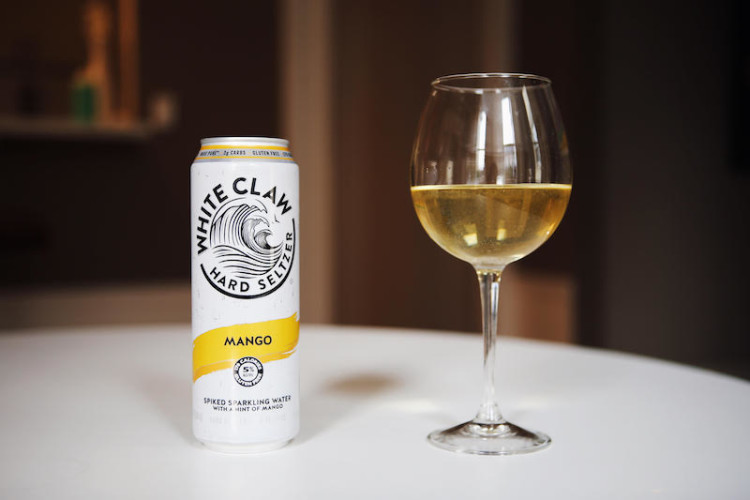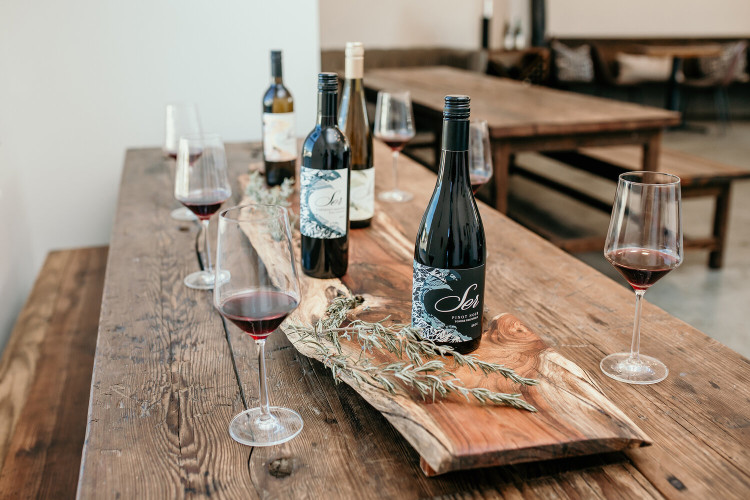Wine School
Talk-the-talk: A Wine Glossary for Beginners
The vino lingo you need to walk-the-walk and talk-the-talk while wine tasting or cracking a can with friends.

By Logan Davis
October 13, 2020
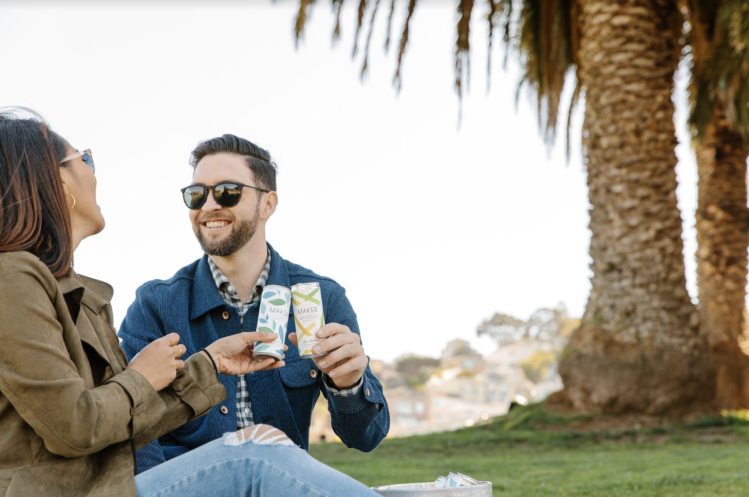
Do wines have arms and a face along with a body, nose and legs? Is terroir a type of dog breed? Wine lingo is expansive, and can feel very high-brow for describing fermented grapes. When a Sommelier comes to your table at a restaurant and begins rambling off fancy French words, wine can easily begin to feel intimidating and inaccessible.
I talked to Maker’s resident Somm, Sophi Hirsch, to help me understand some terms that trip people up. She’s a Certified Sommelier by the Court of Master Sommeliers, and has worked at some of the best restaurants in San Francisco – including one with a Michelin star – so she knows her stuff. Here's a wine glossary with some popular terms that helped us learn how to talk-the-talk.
What makes up a glass of wine

What’s in a grape?
Acidity
Each and every wine has 4 fundamental elements that make up its flavor profile: tannin, alcohol, sweetness, and – you guessed it – acidity. Think about a sour candy or a tart glass of lemonade and your mouth may pucker a bit just by imagining the tartness. That’s acidity! All wines are acidic, with most ranging from roughly 2.5 to 4.5 PH, 7 being neutral. Wine growing regions that have cooler temperatures tend to produce higher acid wines because the grapes ripen slower, don’t develop as much sugar, and retain their acidity. Typically, white wines are more acidic than red ones, with Riesling being a great example of a high acid varietal.
Nose
One of the first steps to drinking wine is giving it a swirl and a sniff. Sommeliers call the aromas that waft from your glass of wine the “nose.” Sometimes these wine terms are complex, and sometimes they’re as simple as that.
Tannins
That dry mouth feeling that comes from drinking a glass of red wine comes from a naturally occurring polyphenol in the skins of grapes, and is called “tannins.” It adds texture to wine, contributing to the structure. Naturally, wines made from thicker skinned grapes will be more tannic than those of thin skinned grapes.
Legs or Tears
You’ll have to pour yourself a glass of wine to understand this one (if you haven’t already). Give it a swirl, and you’ll notice that several vertical streaks appear on the inside of the wine glass. These are called the legs, or tears of a wine. The legs are a study in viscosity, and reflect the rate at which alcohol evaporates. Higher alcohol wines will have denser legs because the alcohol is slower to evaporate. Dessert wines will also have thicker legs as a result of the residual sugar in the wine.
Body
The body of a wine refers to how big and bold and heavy it is. Think about the difference of how a sip of water feels compared to a sip of whole milk – that’s a good gauge for light and full bodied wines. Some common lighter bodied white wines are Riesling or Pinot Grigio, and an example of a fuller bodied white would be an oak-aged Chardonnay. When it comes to red wine, Pinot Noir tends to be lighter whereas Syrah or Cabernet Sauvignon are great examples of fuller bodied reds.
Pro tip: Wines on a wine list are often listed by light-full bodied.
Wine making, or “vinification”
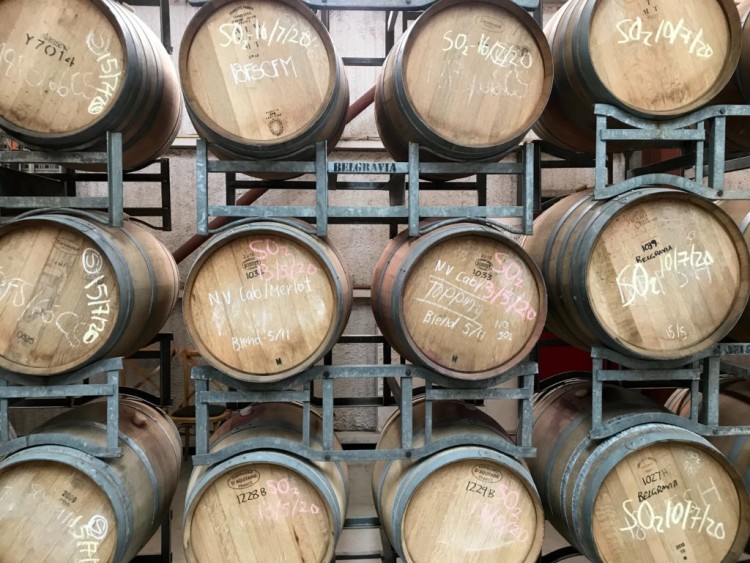
Barrels full of the good stuff.
Fermentation and the “Dry” vs. “Sweet” fallacy
Fermentation is the magical process in which grape juice becomes wine. Long story short, the sugar from the grape juice ferments and is turned into alcohol, and most wines are fermented until they’re “dry,” meaning there’s no residual sugar remaining. Only wines labelled “off-dry” or a dessert wine have actual residual sugar, so if you’re used to describing a regular table wine as “sweet,” a better way to describe those flavors might be “ripe,” “jammy,” “floral,” or “juicy.”
Maceration
Maceration is the part of the winemaking process where the unfermented juice or “must” takes on color, tannin, and flavor from the grape skins, seeds, and even sometimes stems if they’re included! White wines are rarely macerated, rose wines only for a short time. It gives red wine that deep, romantic hue we all know and love.
Oxidized
Wine that has been overexposed to the presence of oxygen. Side effects of oxidation are loss of color and flavor, generally browning in pigment and developing more bitter characteristics. Generally, this is a fault in wine, though some styles of winemaking (example, Sherry production) encourage this.
The world of wine
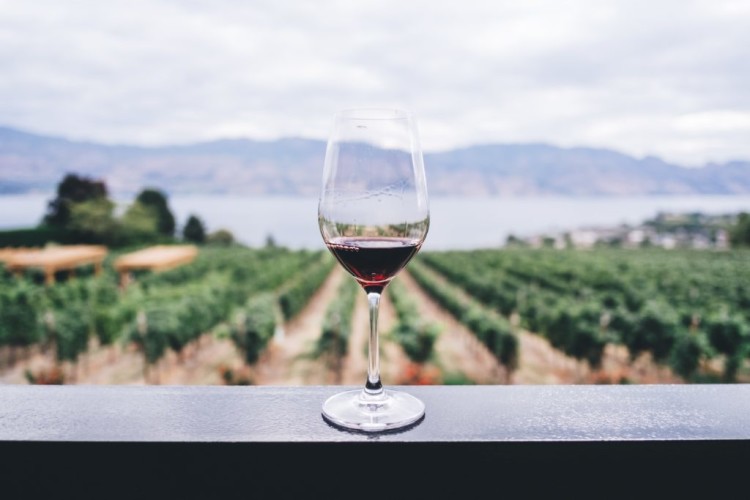
We’d like to share a glass here, please.
Wine growing regions: AVA and AOC
AVA is an acronym for “American Viticultural Area,” which is the American term for a legally defined growing region. Some common ones you may have heard of are Sonoma Valley or Columbia Valley. If a wine is labeled with an AVA, at least 85% of its grapes must’ve been grown there. In France, these legally defined growing regions are called appellation d'origine contrôlée, or AOC.
Corked
A wine is “corked” when it is contaminated by a chemical compound called TCA, which occurs sometimes when the natural material of cork comes in contact with cleaning chemicals that are used in a winery. A corked wine is flawed, it doesn’t smell like a lovely wine any longer, and instead can give off a musty, moldy aroma and taste astringent.
"You’ll know a wine is corked because it smells like a wet dog, or like a soggy basement" - Sophi Hirsch
Sounds lovely, eh? It’s not bad for your health, but definitely warrants a return. Only about 5% of all cork sealed wines are actually corked, so it’s pretty rare. And guess what? Canned wine can’t be corked, so order some Maker and avoid the possibility all together.
Decant
To fully experience wines with age or big bodied reds, pros will often recommend decanting. To decant your wine, you really just pour the wine into another vessel, ideally a glass carafe with cool strategic shapes. Decanting the wine serves two purposes:
It aerates the wine by introducing the presence of oxygen, which brings out and opens up the strong aromas and full flavor.
It separates the wine from any leftover sediment in the bottle
Natural wine
A generalized term for wine made with sustainably grown grapes and low intervention winemaking; meaning no sulfites or additives. So basically a wine that’s produced by adding nothing, nor removing anything from it. A lot of big wine producers get away with adding chemicals and what not to wine to impact color or taste – Maker only works with independent, smaller producers, who do no such thing!
Organic wine
Wines that are produced using organic farming principles or biodynamic practices are often generalized as organic wines. If they’re accompanied with the word natural, it likely means they haven’t been filtered, meaning they may appear a bit cloudier or have sediment towards the bottom of the bottle, and there are no additional additives.
Sommelier
Sommelier translates to wine steward, and is the job of a wine professional. Sommeliers, often referred to casually as Somms, are wine connoisseurs, often with training, who dedicate themselves to knowing all there is to know about wine. They can often name a wine’s varietal, region, and sometimes even its specific vineyard in just a few sips. You’ll often find Somms choosing a wine list at a bar, or in charge of food pairings at restaurants. They’ll also sit on committees that rate wines.
Fun fact: The Court of Master Sommeliers has 4 levels of Somms (you’re most likely to come across a level 1 in a restaurant, and it’s still a huge deal), and less than 200 Master Somms worldwide (check out our wine certification guide to learn more about wine education options). It may come as a surprise, but we at Maker are not Master Somms. We did, however, do a blind tasting of all of our current canned wines and can all name which one it is, so we like to think we’re well on our way.
Terroir
Terroir is, in many ways, referring to the dirt that grows the good stuff. It’s a French word that encompasses the soil, climate, and land where the wine grows, and how all those aspects of the earth affect the taste of the wine.
“It doesn't have an English translation, but it kind of means a sense of time and place. All elements of the earth – weather, soil, etc. – affect a wine. That’s why vintage means something, each year has a totally different terroir.” - Sophi Hirsch
Everything from the elevation of a vineyard, the aspect of a hill, to the minerals in the soil has a big impact on flavor.
Varietal
The name of the grape, or the type of wine we’re working with – like Chardonnay, Pinot Noir, or Cabernet Franc. Depending on where you are, a wine will have to be made of a certain percent of a single grape to be labelled with the varietal rather than a blend. Here in California, it’s 85%.
Well, there you have it, wine terms from A to er... V. Any more terms you're dying to have us decode? Send us a note at hello@makerwine.com.
